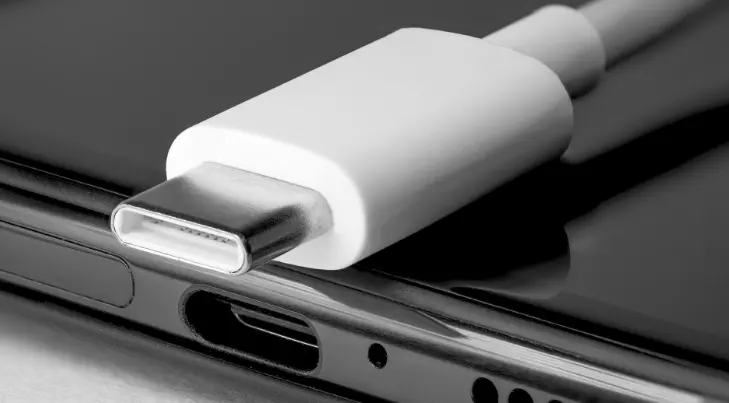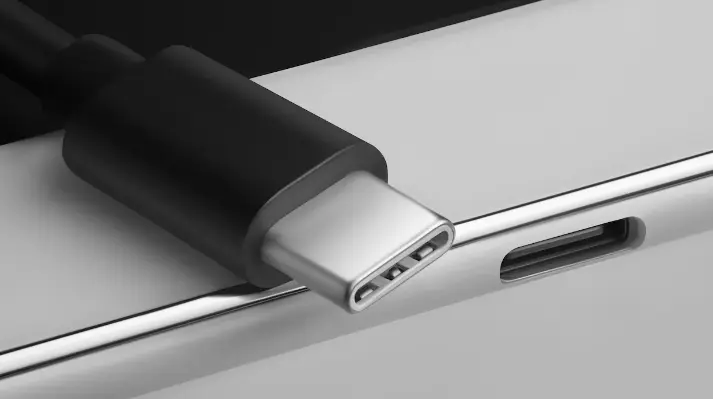In the fast-paced world of technology, staying connected has never been more critical. With the advent of USB-C and Thunderbolt ports, users are presented with versatile options for connecting their devices. But what’s the difference between these two seemingly similar ports? In this article, we’ll explore the distinctions between Thunderbolt and USB-C, shedding light on their unique features and use cases.
The Rise of USB-C

USB-C, often referred to as Type C, has rapidly become the standard connector for modern devices. Its compact design and reversible plug make it incredibly convenient for users. Whether you’re charging your smartphone, connecting peripherals to your laptop, or transferring data between devices, USB-C has become the go-to option.
-
Versatility of USB-C
One of the standout features of USB-C is its versatility. It supports a wide range of protocols, allowing it to handle various tasks seamlessly. You can use a USB-C port for charging your laptop, connecting external displays, attaching storage devices, and even using it for audio interfaces. This universality has made USB-C a favorite among manufacturers and consumers alike.
-
Charging with USB-C
Type C charger have become a staple in the world of smartphones and laptops. With USB Power Delivery (PD) technology, USB-C can deliver higher power levels for faster charging. It’s also capable of bidirectional power flow, meaning you can charge your device and use it to charge other devices simultaneously, such as a smartphone or another laptop – a feature known as “USB On-The-Go” (OTG).
Thunderbolt: The High-Performance Contender
While USB-C is known for its adaptability, Thunderbolt takes the game up a notch by offering high-performance connectivity. Developed by Intel in collaboration with Apple, Thunderbolt technology is designed for data-intensive tasks and demanding applications.
-
Thunderbolt Speed and Bandwidth
The key differentiator for Thunderbolt is its blazing-fast data transfer speeds. Thunderbolt 3, in particular, offers speeds of up to 40 Gbps, making it ideal for tasks like video editing, 3D rendering, and high-resolution gaming. This speed advantage is particularly appealing to professionals who require top-notch performance.
-
Daisy-Chaining with Thunderbolt
Another advantage of Thunderbolt is its ability to daisy-chain multiple devices together. With a single Thunderbolt port, you can connect multiple monitors, external hard drives, and other peripherals in a series. This simplifies cable management and reduces clutter on your desk.
Choosing Between Thunderbolt and USB-C

The decision between Thunderbolt and USB-C largely depends on your specific needs. Here’s a quick guide to help you make an informed choice:
- If you need versatility and compatibility with a wide range of devices and tasks, USB-C is the way to go. It’s suitable for everyday use, from charging your smartphone to connecting external drives.
- For high-performance tasks such as video editing, gaming, or data-intensive work, Thunderbolt is the superior choice. Its incredible data transfer speeds and daisy-chaining capabilities make it a top pick for professionals.
- Budget considerations also play a role. Thunderbolt-compatible devices tend to be more expensive than their USB-C counterparts. If you don’t require Thunderbolt’s performance benefits, USB-C offers a more cost-effective solution.
In the Thunderbolt Port vs. USB-C showdown, both have their strengths and ideal use cases. USB-C is the Swiss Army knife of connectivity, offering versatility and compatibility for everyday users. Thunderbolt, on the other hand, shines in the realm of high-performance tasks, making it a favorite among professionals and enthusiasts.
Ultimately, the choice between Thunderbolt and USB-C depends on your specific needs and budget. As technology continues to evolve, both ports will likely remain essential components of our interconnected world, ensuring we stay plugged in and powered up in our fast-paced digital lives.
Exploring the Benefits of Type C Charger
In our increasingly mobile and tech-driven world, the Type C charger has become a ubiquitous companion for smartphones, laptops, and a wide range of other devices. It’s important to understand what sets Type C charger apart from their predecessors and why they’ve gained such widespread popularity.
-
Universal Compatibility of Type-C
One of the standout features of Type-C chargers is their universal compatibility. Unlike older USB connectors, Type-C is reversible, which means you can plug it in without worrying about the orientation. This eliminates the frustrating trial-and-error process of trying to insert the cable the right way. Moreover, Type C connectors are now found on an array of devices, from smartphones and tablets to laptops and accessories, making them incredibly versatile.
-
Fast Charging with Type C
Type-C chargers often support USB Power Delivery (PD) technology, which enables rapid charging. With the ability to deliver higher power levels, Type-C chargers can significantly reduce charging times for devices. This is especially valuable when you’re in a hurry and need a quick boost of power for your smartphone or laptop.
-
Bidirectional Charging otg type c
One of the lesser-known but highly useful features of Type-C technology is USB On-The-Go (OTG) / otg type c . With OTG capability, your Type-C device can function as both a host and a peripheral. This means you can use your smartphone or laptop to charge other devices like a friend’s phone, a wireless headset, or even another laptop. It’s a handy feature that can save the day when you’re low on battery and need to power up other gadgets.
The Thunderbolt and Type C Connection
Now that we’ve explored the advantages of Type-C chargers, it’s worth noting that Thunderbolt technology also utilizes Type-C connectors. This synergy between Thunderbolt and Type-C brings the best of both worlds, combining high-speed data transfer and charging capabilities.
-
Thunderbolt 4 and Type-C
Thunderbolt 4, the latest iteration of Thunderbolt technology, utilizes Type-C connectors, ensuring compatibility with the Type-C standard. Thunderbolt 4 provides the best of both worlds, offering blazing-fast data transfer speeds of up to 40 Gbps while supporting Type-C charging and other peripherals. This integration of Thunderbolt and Type-C makes it a compelling choice for professionals and power users who require top-tier performance and versatility.
Choosing the Right Charger and Port for Your Needs
As consumers, we’re spoiled for choice when it comes to chargers and ports. To make the right decision, consider the following factors:
- Device Compatibility : Ensure that your devices are compatible with Type-C chargers and Thunderbolt technology, if needed.
- Charging Speed : If you prioritize fast charging, opt for Type-C chargers with USB Power Delivery (PD) support.
- Usage Scenarios : Think about how you use your devices. Are you a professional in need of high-speed data transfer, or are you a casual user with basic connectivity needs?
- Budget : Consider your budget. Thunderbolt-compatible devices tend to be more expensive, so determine if the added performance justifies the cost
Title: Exploring the Benefits of Thunderbolt Port
In the ever-evolving world of technology, connectivity is paramount. Among the myriad of connection options available, Thunderbolt has emerged as a powerful and versatile port. In this article, we delve into the myriad benefits of the Thunderbolt port, shedding light on why it has become a favorite among professionals and enthusiasts.
-
Lightning-Fast Data Transfer Speeds
One of the standout advantages of Thunderbolt is its remarkable data transfer speeds. Thunderbolt 3, the most widely used version, boasts speeds of up to 40 Gbps. This unparalleled bandwidth is a game-changer for tasks that demand rapid data transfer, such as video editing, 3D rendering, and large file transfers. With Thunderbolt, time-consuming data transfers become a thing of the past.
-
Daisy-Chaining Devices
Thunderbolt’s daisy-chaining capabilities allow users to connect multiple devices in a series using a single Thunderbolt port. This means you can link together monitors, external hard drives, docking stations, and other peripherals effortlessly. Not only does this simplify cable management, but it also reduces clutter on your desk, providing a cleaner and more efficient workspace.
-
Universal Compatibility
While Thunderbolt is commonly associated with Mac computers, it is not limited to the Apple ecosystem. Thunderbolt ports can also be found on a wide range of Windows laptops and PCs. This universality ensures that Thunderbolt is accessible to a broader audience, making it an attractive option for users across different platforms.
-
Power Delivery and Charging
Thunderbolt ports often support USB Power Delivery (PD) technology, allowing for high-power charging. This feature is particularly useful for charging laptops, as it can deliver sufficient power to keep your device running even during heavy usage. It’s not just about charging, though; Thunderbolt can also power other peripherals connected to it, reducing the need for multiple power adapters.
-
External Graphics and Displays
Gamers and creative professionals stand to benefit greatly from Thunderbolt’s ability to connect external graphics cards (eGPUs) and high-resolution displays. This enables laptops and computers to handle graphics-intensive tasks and deliver stunning visuals that were once only achievable on desktop systems.
Read more: Finding the Best and Affordable Business Desktop Computer
-
Thunderbolt 4: The Latest Advancement

Thunderbolt technology continues to evolve. Thunderbolt 4, the latest iteration, offers even more capabilities, including support for up to four 4K displays, universal cables, and enhanced security features. As Thunderbolt adoption grows, we can expect to see more devices embracing Thunderbolt 4 for superior performance and connectivity.
In the ever-expanding landscape of connectivity options, Thunderbolt stands out as a powerhouse port with a host of compelling benefits. From lightning-fast data transfers to versatile daisy-chaining capabilities and universal compatibility, Thunderbolt has cemented its place in the tech world.
Whether you’re a professional seeking top-tier performance or a casual user looking for efficient and versatile connectivity, Thunderbolt is a technology that continues to shape the way we connect and interact with our devices. With each new iteration, Thunderbolt promises to push the boundaries of what’s possible in the world of high-speed data transfer and device interconnectivity.

